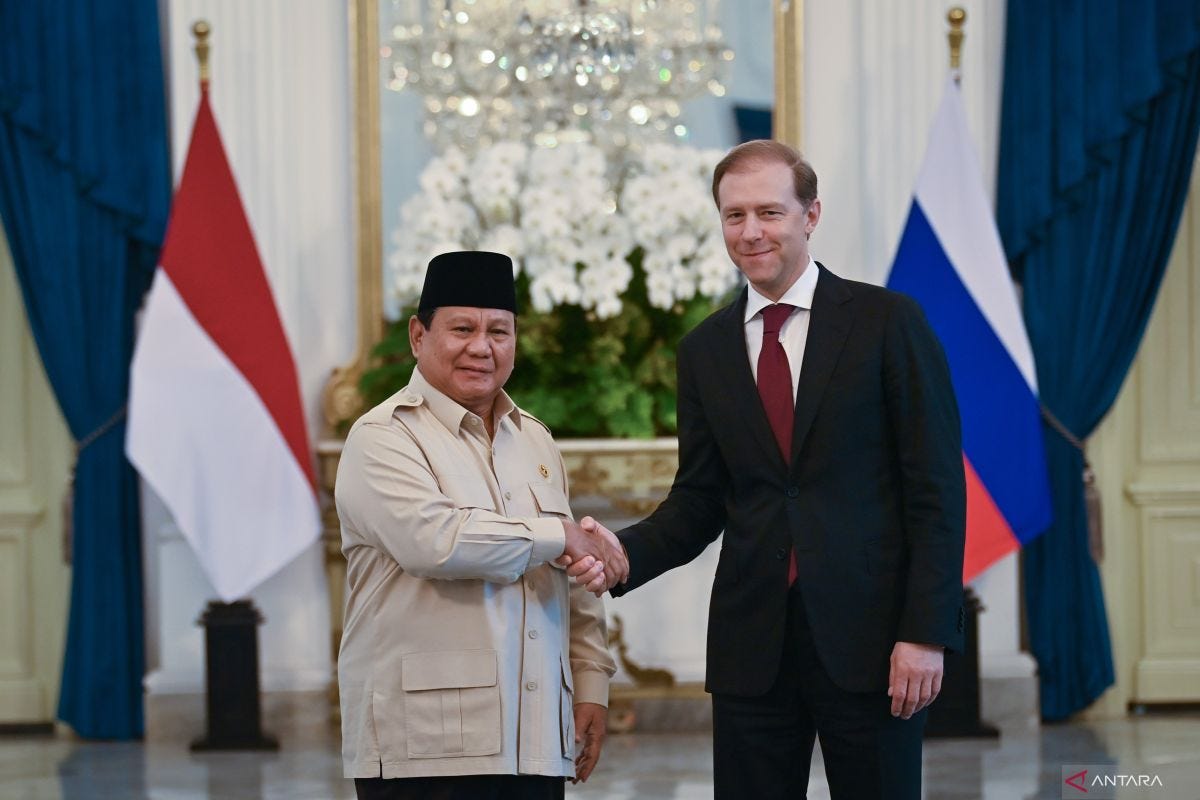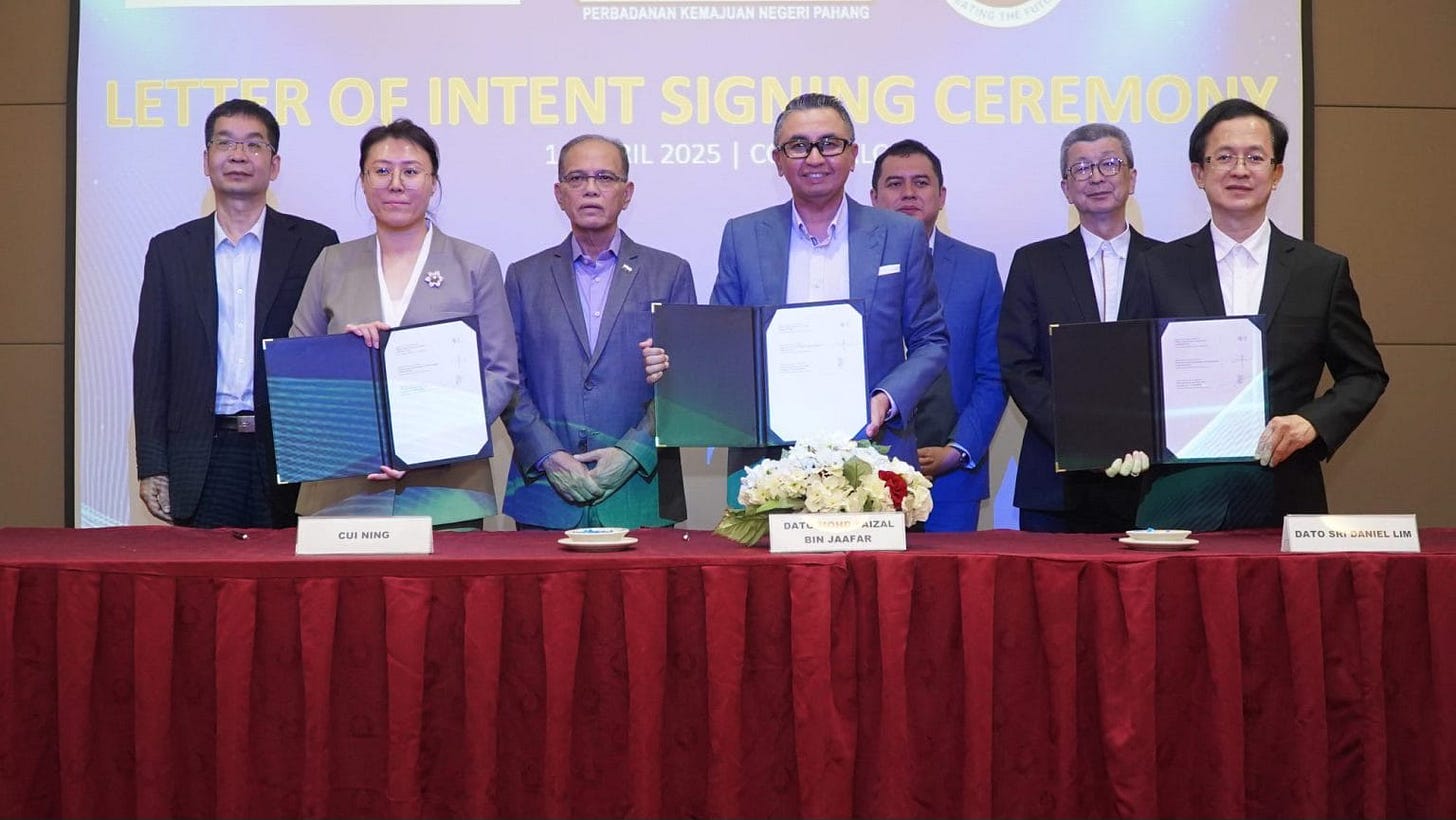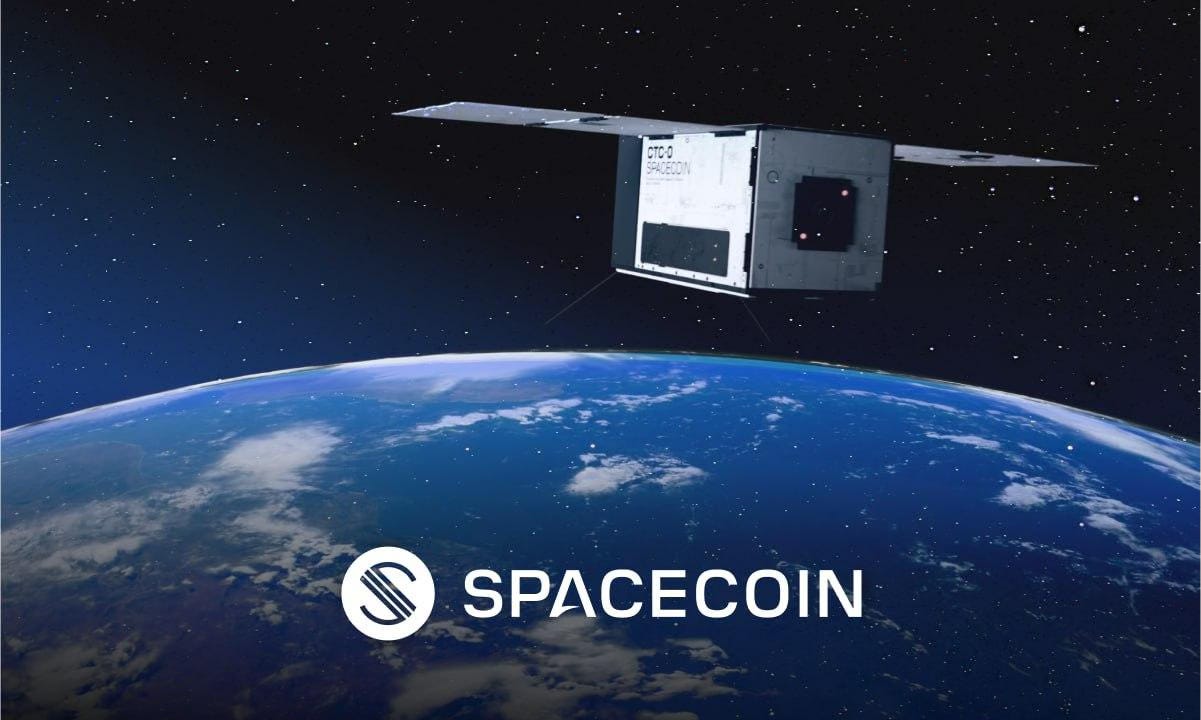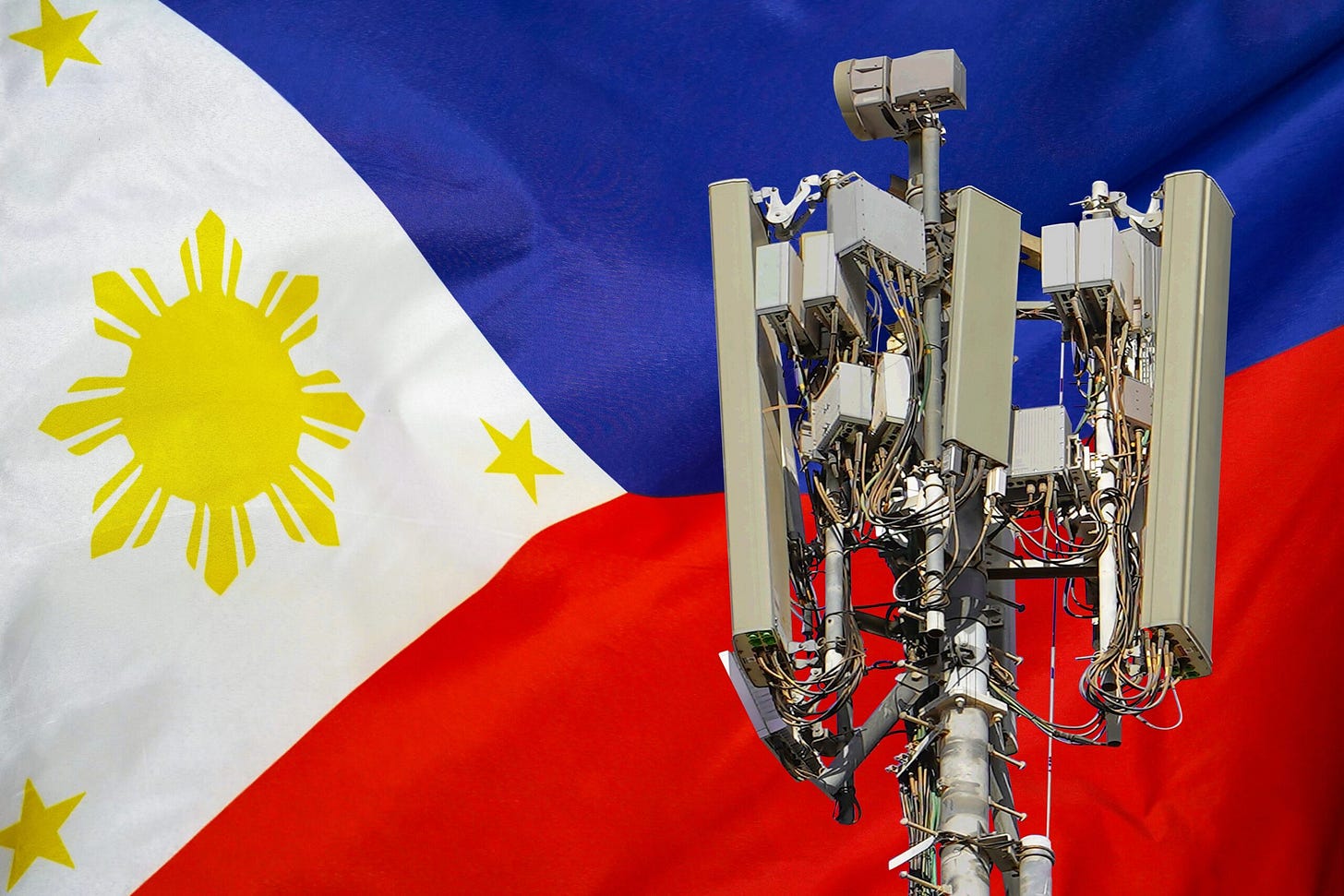Southeast Asia Space Roundup: 10 to 16 April 2025
A summary of all the space news in Southeast Asia over the past week, brought to you by AzurX
The following are the major space developments in the Southeast Asian region tracked by Southeast Asia Space Monitor over the past week:
Vietnam Space Developments
Amanda Ngọc Nguyễn Becomes First Vietnamese-American Astronaut After Blue Origin Mission
Vietnamese-American scientist Amanda Ngọc Nguyễn made history this week as part of the first all-female spaceflight in over 60 years, marking a symbolic milestone for gender diversity in space exploration. Launched aboard Blue Origin’s New Shepard suborbital rocket, the six-member crew—including public figures such as Katy Perry, Lauren Sanchez, and Aisha Bowe—briefly experienced microgravity during an 11-minute flight from West Texas. The successful mission represents a high-visibility achievement for Blue Origin’s commercial space tourism ambitions and underscores the expanding accessibility of spaceflight to non-career astronauts. Beyond its symbolic impact, the mission reinforces the role of suborbital platforms in promoting public engagement, scientific awareness, and inclusivity in the space sector. Blue Origin NS-31 was a sub-orbital spaceflight mission operated by Blue Origin.

Vietnam and Belarus Explore Space and Nuclear Technology Cooperation
Vietnam and Belarus are exploring new frontiers in their bilateral cooperation, with potential expansion into space programs and nuclear power development, according to Belarusian Ambassador Uladzimir Baravikou. The discussions follow the recent visit of Belarusian Deputy Prime Minister Anatoli Sivak to Hanoi, which included high-level meetings, a business forum, and the co-chairing of the 16th Intergovernmental Commission for Trade, Economic, Scientific and Technical Cooperation. The two countries signed over $5.4 million in contracts and reaffirmed their commitment to deepen collaboration across multiple sectors, including industrial technology, high-tech, and education. Belarus highlighted its growing space capabilities—such as its operational nuclear power plant, active space program, and astronaut participation in the International Space Station—as strategic areas for joint initiatives with Vietnam. These developments are supported by the 10-year-old Free Trade Agreement between Vietnam and the Eurasian Economic Union, the recent mutual visa exemption for ordinary passport holders, and ongoing cultural and educational exchanges. With trade reaching record highs and shared interest in emerging technologies, both countries are positioning themselves for deeper economic and scientific cooperation, potentially including the co-development of satellite and nuclear infrastructure.
Vietnam’s MOST Unveils 2025 Strategy, Includes Provisions for Satellite Communications
Vietnam’s Ministry of Science and Technology (MOST) has unveiled an ambitious 2025 strategy centered on building modern, synchronized digital infrastructure—including widespread 5G networks, international-standard data centers, submarine fiber optic cables, and telecommunications satellites—to position the country as a regional leader in digital transformation. Speaking at the Vietnam Digital Awards 2025, officials emphasized targeted investments in breakthrough technologies such as AI, semiconductors, smart manufacturing, and cybersecurity, alongside legal reforms to support innovation. Key initiatives include expanding the digital economy’s GDP share beyond 20%, fostering talent both domestically and among overseas Vietnamese experts, and driving deeper digital inclusion into remote areas. MOST is also accelerating the deployment of national databases, online public services, and cross-sector digital platforms. In 2024, milestones such as the launch of Vietnam’s sixth submarine cable and expanded 5G spectrum contributed to a 57% year-on-year rise in data transactions, helping the country reach a “Very High” ranking in the UN’s E-Government Development Index. MOST’s push reflects a broader vision of digital infrastructure as a cornerstone of economic resilience, national competitiveness, and inclusive growth.
Vietnam Experts Expect Starlink to Complement, Not Disrupt, National Telecom Sector
Starlink’s upcoming entry into Vietnam’s satellite internet market is expected to complement rather than disrupt the country's robust terrestrial telecom infrastructure, experts say. With SpaceX granted a license to trial the service under stringent regulatory conditions, Vietnam will become the fourth Southeast Asian country to access Starlink, following the Philippines, Malaysia, and Indonesia. Analysts highlight that Vietnam has already achieved near-universal 4G coverage and rapid 5G deployment, supported by competitive offerings from major domestic operators like Viettel, VNPT, and MobiFone. While Starlink’s value lies in bridging connectivity gaps in geographically challenging regions—such as mountains, remote islands, and disaster-prone zones—it is unlikely to significantly shift the market due to high costs and the limited number of underserved areas. Regulatory conditions mandate all user data to be routed through domestic networks and stored locally, aligning with national security and data sovereignty policies. Industry observers view satellite internet as an essential backup and a strategic layer within Vietnam’s broader digital infrastructure strategy, especially for enhancing connectivity in marginalized areas.
Vietnam’s FPT Telecom Looks to Collaborate With SpaceX’s Starlink
FPT Telecom, a subsidiary of Vietnam's tech giant FPT Corporation, views SpaceX’s Starlink not as a rival but as a potential collaborator, as it currently does not offer satellite internet services. At its 2025 AGM, leadership emphasized that Starlink’s entry into Vietnam via a five-year pilot program aligns with the broader emergence of a low-Earth orbit (LEO) economy, which is projected to exceed $2 trillion globally within a decade. FPT Telecom is developing its own strategy to address this shift, recognizing the potential for LEO satellite services to eventually complement or replace existing 5G and 6G technologies. While Starlink received government approval for a controlled pilot deployment of fixed and mobile satellite internet services, FPT is focusing on data center investments, undersea cables, and broadband market leadership, targeting 8 million subscribers and expanding its value-added services. The company reported strong 2024 financials and has set ambitious growth targets for 2025, with planned investments of VND3.84 trillion ($149 million) and a revenue goal of VND19.9 trillion ($772 million), underscoring its readiness to adapt to evolving telecom trends driven by satellite and LEO-based innovations.
Indonesia Space News
Russia Offers Indonesia Deepening Space Cooperation
At the recent plenary session of the Russia-Indonesia Joint Commission on Trade-Economic and Technical Cooperation, Russian First Deputy Prime Minister Denis Manturov highlighted the Kremlin’s interest in expanding bilateral space collaboration with Indonesia. In addition to proposed partnerships in fossil fuel supply and hydrocarbon infrastructure, Manturov emphasized Russia’s readiness to engage Indonesia in space-related domains, including satellite navigation, remote sensing technologies, piloted interplanetary navigation, and capacity-building through staff training. These initiatives align with Indonesia’s broader ambitions to bolster its domestic space capabilities and advance its geospatial and satellite infrastructure, offering strategic opportunities for technological transfer and deepening bilateral cooperation in the evolving Indo-Pacific space economy.

Expert Calls for Sovereign Satellite Infrastructure in Indonesia
Ann Cammaro, Founder & CEO of Antarexa Space Global and a prominent Indonesian space expert, emphasized the strategic necessity of satellite infrastructure for Indonesia’s space independence, especially given its vast archipelagic geography. Speaking at a recent event in Bandung, Cammaro argued that relying solely on ground-based infrastructure like BTS towers and submarine cables is insufficient and risky, particularly in remote regions like Papua. He highlighted Indonesia’s historical dependency on Western satellite technology and warned of vulnerabilities this creates in times of global crises, such as the Ukraine war. Cammaro advocated for greater national control over space assets and called for a cohesive approach involving government, private sector, and international partners to overcome funding and human resource challenges. He cited the SATRIA-1 satellite—launched through a collaboration between the Ministry of Communication's BAKTI agency and PT Satelit Nusantara Tiga—as a positive example of local capability and a foundational step toward developing a sovereign and resilient satellite infrastructure.
Indonesia’s PT Andyrana Agubg Nusa Signs Geospatial Data MoU With China’s Xiamen Tianwei Technology
China’s Xiamen Tianwei Technology Co., Ltd. and Indonesia’s PT Andyrana Agung Nusa have signed a memorandum of cooperation in Xiamen, China, to advance bilateral collaboration in satellite remote sensing data applications and smart agriculture. The agreement underscores the growing role of geospatial technologies in supporting sustainable development across Southeast Asia and reflects a broader trend of integrating space-based data with precision agricultural practices. This partnership is expected to enhance data-driven decision-making in Indonesia’s agricultural sector and facilitate the exchange of satellite expertise between the two countries, reinforcing China’s expanding footprint in regional space technology cooperation.
Indonesia to Benefit From Spacecoin’s Satellite Internet Services in 2026
As competition intensifies in the satellite internet sector across emerging markets, Indonesia is poised to become a key battleground with the entry of new player Spacecoin, which plans to launch services in the country by 2026. Founded by Creditcoin and Gluwa entrepreneur Tae Oh, Spacecoin aims to deploy a constellation of 10 low-Earth orbit (LEO) satellites for equatorial coverage and deliver internet access to underserved populations at a disruptive price point of $2 per month—significantly lower than Starlink’s $46. Indonesia, with approximately 93 million people still offline, represents a major growth opportunity for satellite-based connectivity providers, especially in rural and remote regions where traditional infrastructure is lacking. Spacecoin’s blockchain-enabled Decentralized Physical Infrastructure Network (DePIN) introduces an open-source, permissionless connectivity model, which contrasts with the vertically integrated approach of incumbents like Starlink, Amazon’s Project Kuiper, and Eutelsat OneWeb. SpaceX, which has already launched Starlink services in Indonesia, is also Spacecoin’s launch partner for its demonstration satellites. The geopolitical climate is also favorable, with governments increasingly seeking alternatives to dominant players like Starlink. Spacecoin’s proposition, anchored in affordability and decentralization, could position it as a strategic ally in Indonesia’s push to close its digital divide while maintaining national autonomy over critical communications infrastructure.
Singapore Space Developments
Deloitte, Singapore’s SSTL Release Space to Thrive: Southeast Asia’s Space Industry on the Rise Report
Deloitte, in cooperation with Singapore Space & Technology Ltd. (SSTL), released its Space to Thrive: Southeast Asia's Space Industry on the Rise report. The report describes how the space sector is rapidly transitioning from a government-led domain to a vibrant commercial ecosystem, offering transformative opportunities across industries such as telecommunications, agriculture, health, mining, and logistics. Businesses no longer need to radically change operations to integrate space-based technologies—Earth observation, satellite connectivity, and GNSS can be seamlessly adopted to enhance efficiency, competitiveness, and resilience. However, sectors that fail to incorporate space risk missing out on critical capabilities and exposing themselves to operational vulnerabilities. Governments play a pivotal role in unlocking the full value of space by shaping national strategies, improving regulation, investing in talent and infrastructure, and fostering international collaboration. In Southeast Asia, the potential is especially significant: Earth Observation alone contributed US$15 billion to the region’s economy in 2023 and could triple in value by 2030. Country-specific profiles of Singapore, Malaysia, Indonesia, Thailand, the Philippines, and Vietnam reveal diverse opportunities for businesses to leverage space technologies for sustainable development, connectivity, and urban innovation—signaling that the region holds significant "Space to Thrive."
5th Edition of Geo Connect Asia Takes Place in Singapore
The 5th edition of Geo Connect Asia opened in Singapore with record participation, highlighting the region's accelerating adoption of geospatial technologies to address complex challenges across land, sea, and air domains. Held at the Sands Expo & Convention Centre and co-located with events including Digital Construction Asia and Drones & Uncrewed Asia, the conference features over 100 exhibitors and expects 3,000 attendees. Themed “Transforming Technology into Solutions,” the event showcases innovations from satellite Earth observation to autonomous systems, with a strong emphasis on AI, data interoperability, and geospatial intelligence. Key forums include the Geo Autonomy Summit and the inaugural APAC Earth Observation Forum, underscoring growing interest in Earth observation and satellite-based data solutions. Supported by the Singapore Land Authority and regional partners, the event positions itself as a vital knowledge-sharing hub for ASEAN countries grappling with urbanization, climate resilience, and resource management. The event's expansion reflects rising demand for integrated geospatial tools to support national planning, infrastructure development, and disaster response across the Asia-Pacific.
Myanmar Space News
India’s Air Force Reports GPS Jamming and Spoofing in Myanmar Airspace
Indian Air Force (IAF) relief missions to earthquake-stricken Myanmar recently encountered GPS spoofing attacks, raising serious concerns over aviation safety and regional cybersecurity vulnerabilities. During six sorties flown on 29 March 2025, IAF pilots reported receiving falsified GPS signals intended to mislead aircraft from their designated routes—an act that poses not only navigational risks but also the potential for air defense systems to misidentify aircraft. With similar spoofing incidents documented over Pakistani and Myanmar airspace, suspicion points toward China’s involvement in supplying the necessary technology and training. The region’s dependence on GPS—a key component of global navigation satellite systems (GNSS)—makes it particularly susceptible, with even civilian flights along the India-Pakistan border reporting 465 GPS interference incidents in less than four months. While aircraft can revert to inertial navigation systems (INS) as a backup, the frequency and scale of these spoofing attempts underscore the urgent need for hardened GNSS infrastructure, improved cyber-defense protocols, and regional coordination. The situation is further complicated by Myanmar’s unstable post-coup airspace, which suffers from degraded air traffic control and increased exposure to anti-aircraft threats. As GPS spoofing becomes a low-cost, high-impact tactic with implications for both military and civilian aviation, South and Southeast Asia’s aviation sector must prioritize resilience against satellite-based cyberattacks.
Myanmar’s Junta Impedes Earthquake Recovery Through Widespread Satellite & Internet Bans
More than a few weeks after a devastating 7.7 magnitude earthquake struck Myanmar, the country’s humanitarian response remains critically hampered by widespread internet blackouts imposed by the ruling military junta, highlighting the life-or-death importance of satellite and AI technologies in disaster zones. With communications infrastructure damaged and regime-imposed shutdowns still in effect across nearly a third of the country, many families remain unaware of the fate of loved ones among the estimated 3,500 dead. Aid delivery has been delayed by up to three days in some areas, and even awareness of the earthquake's scale was severely restricted until clandestine Starlink connections—operating via satellite at prohibitively high costs—offered glimpses of the situation. Technologies like SpaceX’s Starlink, EU’s Copernicus satellite program, and AI-powered remote sensing tools from Microsoft’s AI for Good Lab are enabling limited emergency assessments and communications, yet their impact is constrained by cloud cover, financial barriers, and the junta's political restrictions. As satellite and AI-based platforms increasingly become essential to disaster response and real-time humanitarian coordination, Myanmar’s crisis underscores both the transformative potential of space-enabled technologies and the urgent need for regulatory and logistical frameworks that ensure equitable, conflict-resilient access to digital infrastructure.

Other Regional Space Developments

Malaysia Companies Sign With China Great Wall Industry Corporation on Space Launch Capabilities
Malaysia has taken a strategic leap toward establishing itself as a regional space technology hub with the signing of a Letter of Intent (LOI) between the Pahang State Economic Development Corporation (PKNP), China Great Wall Industry Corporation (CGWIC), and Lestari Angkasa Sdn Bhd. This trilateral collaboration, backed by key state and industry leaders, lays the groundwork for advancing Malaysia’s space launch capabilities—including the development of “Sea Launch” platforms—and strengthening its commercial space services and aerospace supply chain. The partnership also envisions significant technology transfer, technical advisory support for the Malaysian government, and the upskilling of local talent. If successfully implemented, it would align with Malaysia’s National Space Policy 2030, catalyze economic growth in Pahang, and position the country as a strategic launch and innovation node in Southeast Asia. For CGWIC, the initiative represents an expansion of its influence in the ASEAN space economy, while PKNP and Lestari Angkasa deepen their roles as facilitators of Malaysia’s emerging space ecosystem.
Philippines’ Telecoms Chamber Warns of Flaws in Legislation for Foreign Satellite Operators
The Philippine Chamber of Telecommunications Operators (PCTO) has raised significant concerns over the proposed Konektadong Pinoy bill, warning that its current provisions could compromise national security, create regulatory asymmetries, and undermine fair competition in the country’s telecommunications sector. While the bill aims to expand internet access and encourage new entrants into the data transmission market, PCTO argues that removing the legislative franchise requirement for operators of international gateways, cable landing stations, and satellite services could allow unchecked participation by potentially state-sponsored or foreign-controlled entities, bypassing critical cybersecurity and due diligence protocols. The group also criticizes the bill’s grace period for cybersecurity compliance, the lack of obligation for new players to serve underserved or geographically isolated areas (GIDAs), and exemptions that advantage new entrants over established operators. PCTO calls for the National Telecommunications Commission (NTC) to retain authority in vetting technical and legal qualifications, while urging lawmakers to adopt a more holistic, secure, and inclusive approach that preserves spectrum integrity, ensures universal service, and aligns with the broader goals of equitable digital development in the Philippines.
Be sure to catch up with space activities in the region in the next edition of Southeast Asia Space Monitor’s space roundup!










